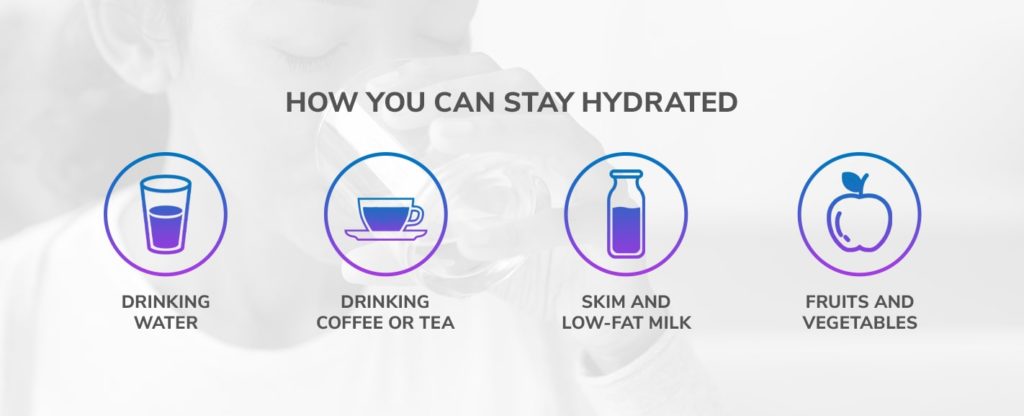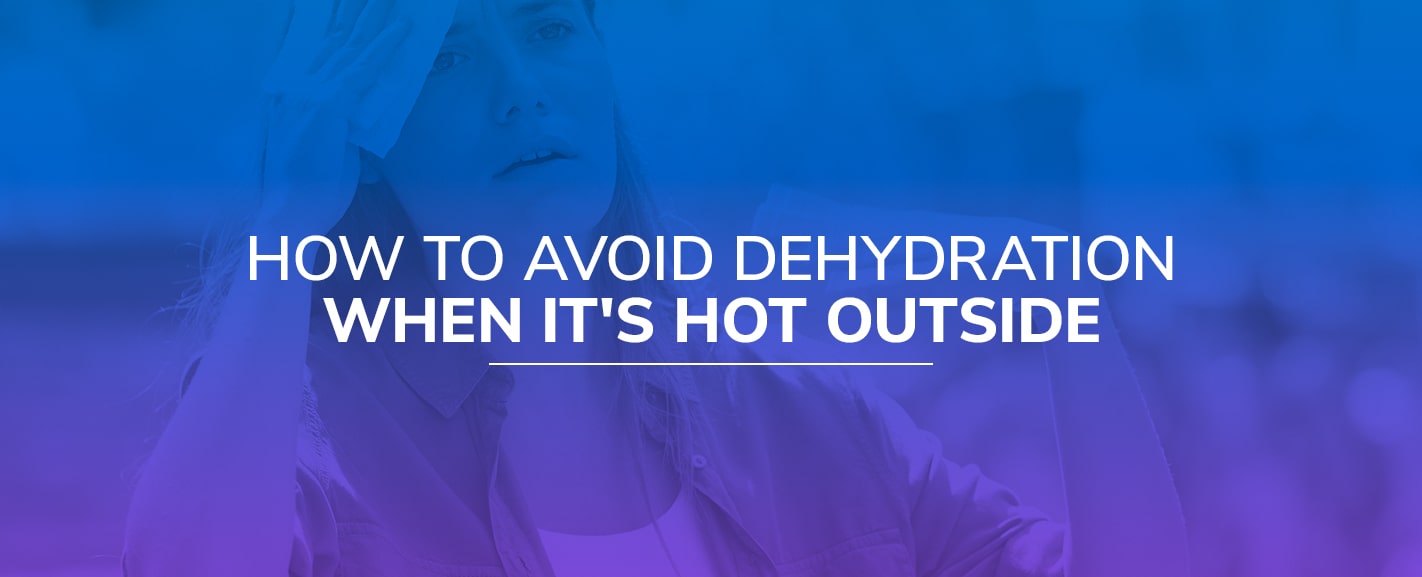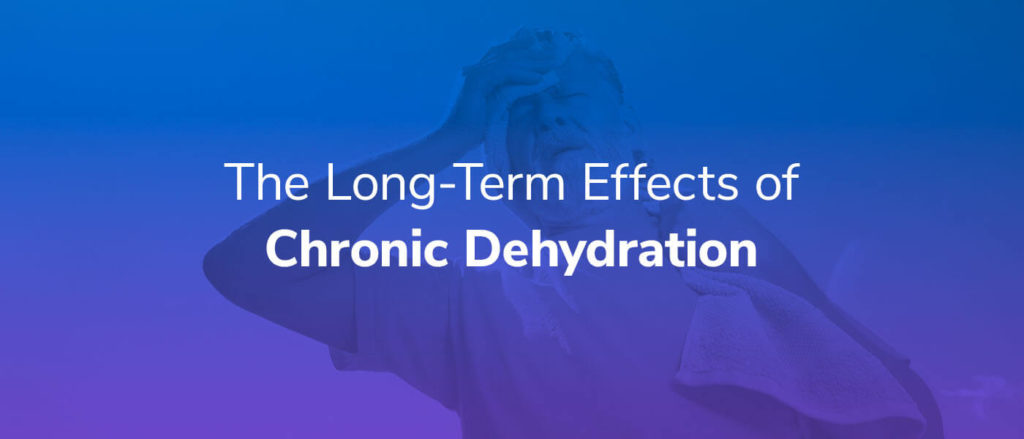Nothing is more refreshing than a cold cup of water on a hot summer day. That’s because, odds are, you’re dehydrated. Being under the sun causes you to sweat, releasing water and electrolytes from your body and increasing your chances of dehydration. Here, you’ll learn more about the causes, signs and symptoms of dehydration, as well as some ways you can stay hydrated.
- What Is Dehydration and Who Is at Risk?
- How You Can Stay Hydrated
- Connect With Mobile IV Medics for Hydrating IV Therapy Today
What Is Dehydration and Who Is at Risk?
Water makes up 60% of the human body — the heart is 73% water, lungs are 83%, skin is 64%, muscles and kidneys are 79% and bones are 31%. Staying hydrated is essential because the body relies on water to perform its normal functions. For example, being hydrated keeps you cool, maintains muscle and joint function and aids in weight control.
Everyone is at risk of dehydration, which happens when you lose more fluid than you consume. Some populations at a higher risk for dehydration include people exposed to the sun, like construction workers or landscapers, as well as young children, athletes and people on certain medications. Older adults are also at risk of dehydration because they have a lower body water volume.
How Do You Get Dehydrated?
The most common cause of dehydration is not drinking enough water throughout the day. Ideally, you should consume anywhere from 12 to 16 cups of water a day, depending on your gender and size. Dehydration can also be a result of:
- Diarrhea or vomiting: Serious cases of diarrhea or vomiting cause a loss of water and electrolytes, both necessary for hydration — electrolytes help keep the water in your body balanced.
- Fever: Sweating is a common symptom of a high fever, releasing water and electrolytes from your body. You might also eat fewer water-rich foods or drink less water when you’re sick, increasing your chances of dehydration.
- Excessive sweating: As mentioned, when you sweat, your body releases water and electrolytes. Hot weather and physical activity cause your body to sweat, making individuals like athletes or landscapers more prone to dehydration. People in hotter climates are at an increased risk, too.
- Increased urination: Many factors can increase urination, like urinary tract infections (UTIs), anxiety and diabetes. Even consumption of diuretics — foods, drinks or medications that increase your urge to urinate — such as coffee can lead to dehydration.
If you’re at an increased risk of dehydration, it’s important to consume more water or water-rich foods. It’s equally important to recognize the signs of dehydration so you can keep your body healthy.
Common Signs and Symptoms of Dehydration
One of the most recognized symptoms of dehydration is thirst. However, by the time you’re thirsty, you’re likely already decently dehydrated.
Learn other signs of dehydration, such as:
- Darker-colored urine
- Decreased urine
- Bad breath
- Dry mouth
- Fatigue
- Sugar cravings
Other, more serious symptoms of dehydration include:
- Confusion
- Dizziness
- Fainting
- Heart palpitations

How You Can Stay Hydrated
Luckily, there are many ways you can prevent dehydration:
- Drinking water: Drink enough water every day. The exact amount ranges depending on your gender, age, geographical location and activity level. Water is the best beverage to drink to stay hydrated because it doesn’t contain any added sugars or calories.
- Drinking coffee or tea: Coffee and tea can have almost equal hydrating benefits as water. However, consume both in moderate amounts because too much can have a diuretic effect on the body. The safest consumption of caffeine is below 400 milligrams, equal to about four cups of caffeinated coffee. Try to avoid added dehydrating creamers and sugars, as well.
- Skim and low-fat milk: Milk is hydrating and rich in nutrients. It contains high levels of electrolytes, which work hand-in-hand with water. For some people, drinking milk isn’t the best solution, particularly for those who are lactose intolerant. Too much dairy consumption may lead to discomfort, bloating, diarrhea or vomiting.
- Fruits and vegetables: Much of your water intake comes from foods like fruits and vegetables. Examples of water-rich foods you should add to your diet to stay hydrated are cucumber, lettuce, celery, radishes, watermelon, strawberries, cantaloupe and pineapple.
The Most Powerful Solution — IV Fluids for Dehydration
The most powerful solution to dehydration is IV therapy. “IV” standards for intravenous, where patients receive vitamins and minerals through an IV drip. A health care professional administers them using a topical numbing agent, so the hydrating experience is entirely painless.
People use IV therapy for many reasons, especially for hydration. This form of treatment uses IV fluid, or saline solution, made from sodium chloride, water and electrolytes — everything your body needs to stay hydrated. You also have the option of adding other nutrient-rich add-ins, such as:
- Vitamin B12
- Vitamin B Complex
- Taurine
- Zinc
- Vitamin C
- Glutathione
- Magnesium
- Anti-nausea medicine
- Anti-heartburn medicine
Who Can Benefit From IV Therapy?
Adults are great candidates for IV therapy. Almost any adult can receive IV therapy right from the comfort of their own home. People who will benefit the most from IV therapy are those who can’t consume enough food, have a chronic illness, are dehydrated from exercise or alcohol consumption or just need a little extra boost.
What Can You Expect From an IV Therapy Appointment?
Start your experience by scheduling an appointment. You can schedule an appointment from your home or office, and a nurse will connect with you the same day for treatment. The best thing about IV therapy is you don’t have to travel. Instead, a nurse will come to your home, friend’s house, workplace or wherever you can sit comfortably for around 45 minutes to an hour.
Once your nurse arrives, they’ll disinfect the injection site and place a topical numbing cream to help you avoid feeling any discomfort during your hydrating experience. From there, they’ll carefully place a needle into your vein, where you’ll begin receiving your hydrating fluid. You can relax during your treatment and enjoy scrolling on your phone, reading a book or watching your favorite television show.
How Much Does IV Therapy Cost?
Costs for IV therapy range depending on where you receive your treatment and what type of treatment you choose. Expect to pay around $150 or more, depending on if you want add-ons or specialized treatments. Costs include the IV drip, transportation costs and expert service from a registered nurse. Compared to co-pay prices for a hospital visit for dehydration, IV therapy can bring a lot of value.

Connect With Mobile IV Medics for Hydrating IV Therapy Today
Whether you’re prone to dehydration or need an extra boost, book an appointment with Mobile IV Medics. We’re 100% mobile, delivering IV therapy treatments straight to your door. Mobile IV Medics serves people in many states, including California, Florida, Texas, Nevada, and George — locations prone to heat exposure and ideal for hydration treatments — and we’re frequently opening new locations throughout the country.
Get started by browsing our available treatment packages and scheduling your appointment today.
Sources:
- https://www.usgs.gov/special-topic/water-science-school/science/water-you-water-and-human-body
- https://www.mayoclinic.org/healthy-lifestyle/nutrition-and-healthy-eating/in-depth/water/art-20044256
- https://www.mayoclinic.org/diseases-conditions/dehydration/symptoms-causes/syc-20354086
- https://www.webmd.com/a-to-z-guides/dehydration-adults
- https://www.mayoclinic.org/healthy-lifestyle/nutrition-and-healthy-eating/in-depth/caffeine/art-20045678





